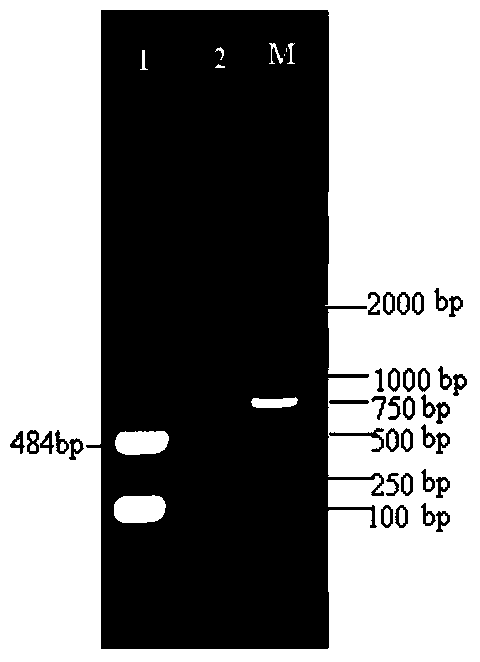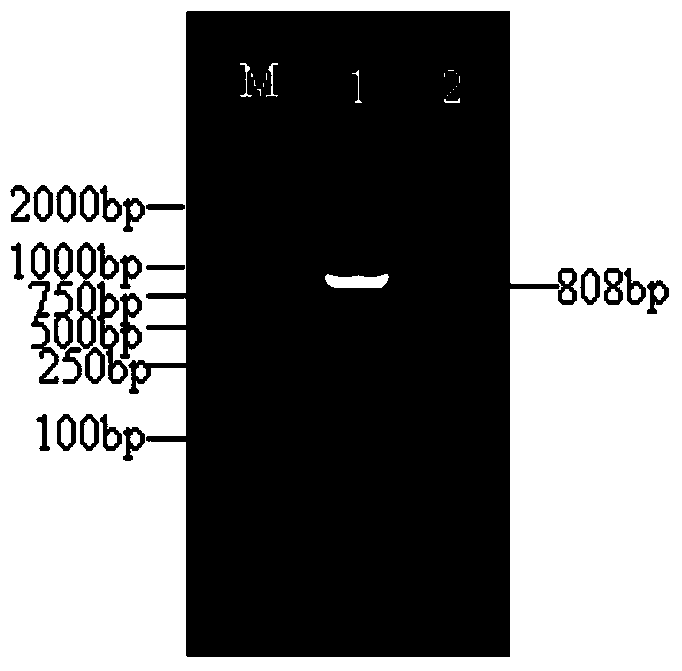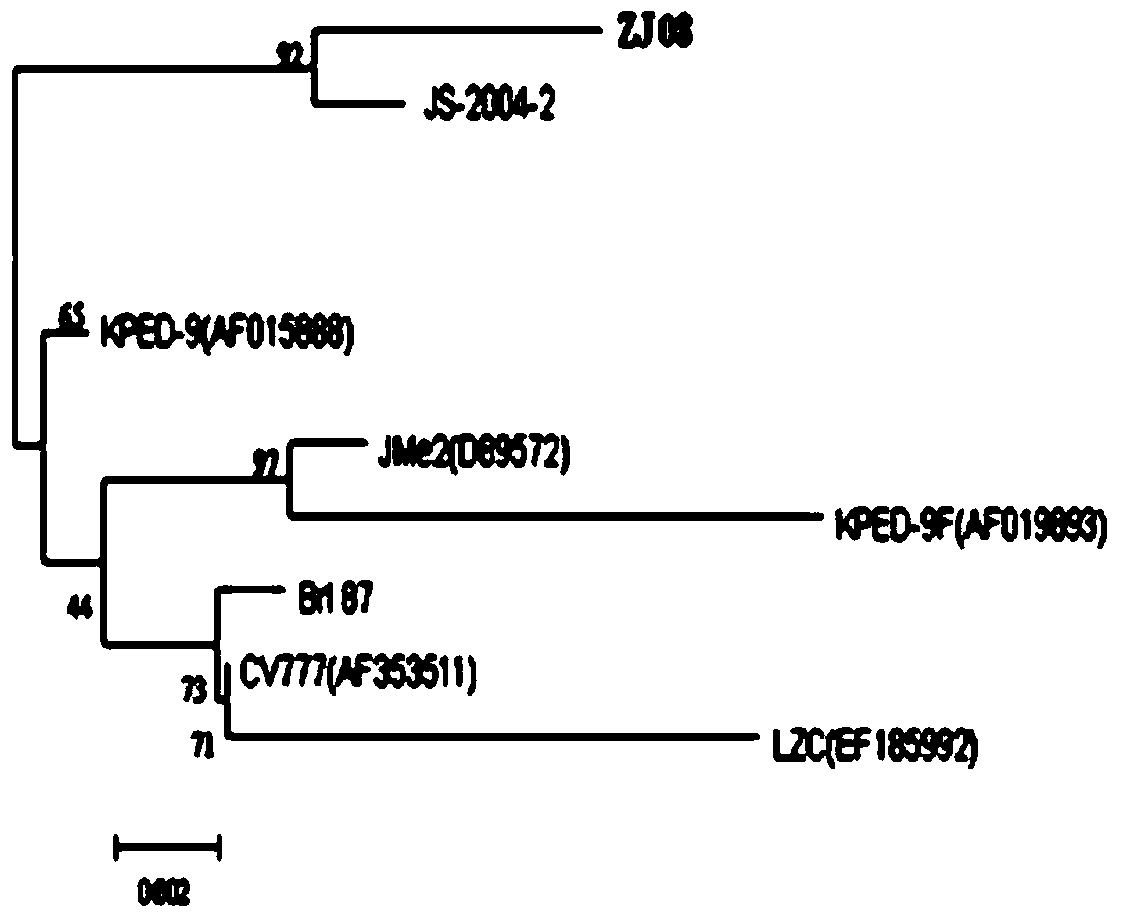Porcine epidemic diarrhea virus stain and application thereof
A porcine epidemic diarrhea and virus technology, applied in the direction of antiviral agents, viruses/bacteriophages, and medical preparations containing active ingredients, can solve problems such as acute onset, limited protective effect of porcine diarrhea, and economic losses of farmers, and achieve Good safety and good immune protection effect
- Summary
- Abstract
- Description
- Claims
- Application Information
AI Technical Summary
Problems solved by technology
Method used
Image
Examples
Embodiment 1
[0023] Example 1 Isolation and identification of porcine epidemic diarrhea virus
[0024] 1. Isolation of porcine epidemic diarrhea virus
[0025] The small intestine of pigs with diarrhea was sent to a pig farm in Zhejiang, and the contents were collected for detection by RT-PCR. The result was positive for porcine epidemic diarrhea antigen.
[0026] Take an appropriate amount of the small intestine submitted for inspection, scrape the intestinal mucosa and contents, add PBS according to the ratio of 1:5 (weight: volume), freeze and thaw repeatedly 3 times, centrifuge to get the supernatant, filter with a 0.22 μm filter membrane, and add the final concentration to the filtrate 20 μg / ml trypsin, 37°C for 1.5 hours.
[0027] Inoculate Vero cells covered with a single layer according to the conventional method (wash three times with PBS of pH 7.4 before inoculation), inoculate the virus at a ratio of 10%, absorb at 37°C for 1 hour, and supplement the cell maintenance solution (...
Embodiment 2
[0040] Example 2 Attenuation of Porcine Epidemic Diarrhea Virus
[0041] 1. Attenuated cultivation of porcine epidemic diarrhea virus
[0042] The isolated porcine epidemic diarrhea virus was continuously passaged on Vero cells for 100 passages, cloned and purified during this process, and then continued to passage on Vero cells for 145 passages. The 145th generation virus was detected by RT-PCR, and the amplified S gene fragment was 484bp.
[0043]The PEDV ORF3 gene sequence was relatively stable in the 30th, 50th, 70th and 90th generations. There were changes in individual bases, but no impact on amino acids; and a sudden deletion of 49 nucleotides in the ORF3 gene from the 105th generation, and a stable deletion of 49 nucleotides in the 105th, 125th, and 145th generations (sequence See SEQ ID No. 6). The result is as Figure 5 . The primers for amplifying the ORF3 sequence are:
[0044] ORF3-F: TCCTAGACTTCAACCTTACG
[0045] ORF3-R: GGTGACAAGTGAAGCACAGA
[0046] The ...
Embodiment 3
[0072] Example 3 Safety Evaluation of Porcine Epidemic Diarrhea Virus ZJ08 Strain
[0073] Dilute passage 125 virus to 10 6.0 TCID 50 / ml (10 heads), 10 3-day-old piglets were selected, injected intramuscularly, 1ml each, and observed for 14 days, and 5 piglets in the control group were injected with the same dose of normal saline; in addition, pregnant sows one and a half months before delivery were selected. 10 pigs, each with 20 doses intramuscularly, and 5 sows in the control group were injected with the same dose of saline; the indicators of feed intake, body temperature, diarrhea and abortion of the sows were observed, and the litter size of the sows was counted.
[0074] The results proved that large-dose injection of the virus had no effect on piglets and sows, and no fever, diarrhea, and local inflammation occurred. The sows did not suffer from reproductive disorders such as abortion and stillbirth. There was no significant difference between the test group and the c...
PUM
 Login to View More
Login to View More Abstract
Description
Claims
Application Information
 Login to View More
Login to View More - R&D
- Intellectual Property
- Life Sciences
- Materials
- Tech Scout
- Unparalleled Data Quality
- Higher Quality Content
- 60% Fewer Hallucinations
Browse by: Latest US Patents, China's latest patents, Technical Efficacy Thesaurus, Application Domain, Technology Topic, Popular Technical Reports.
© 2025 PatSnap. All rights reserved.Legal|Privacy policy|Modern Slavery Act Transparency Statement|Sitemap|About US| Contact US: help@patsnap.com



